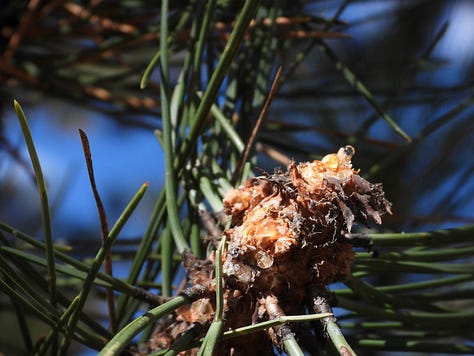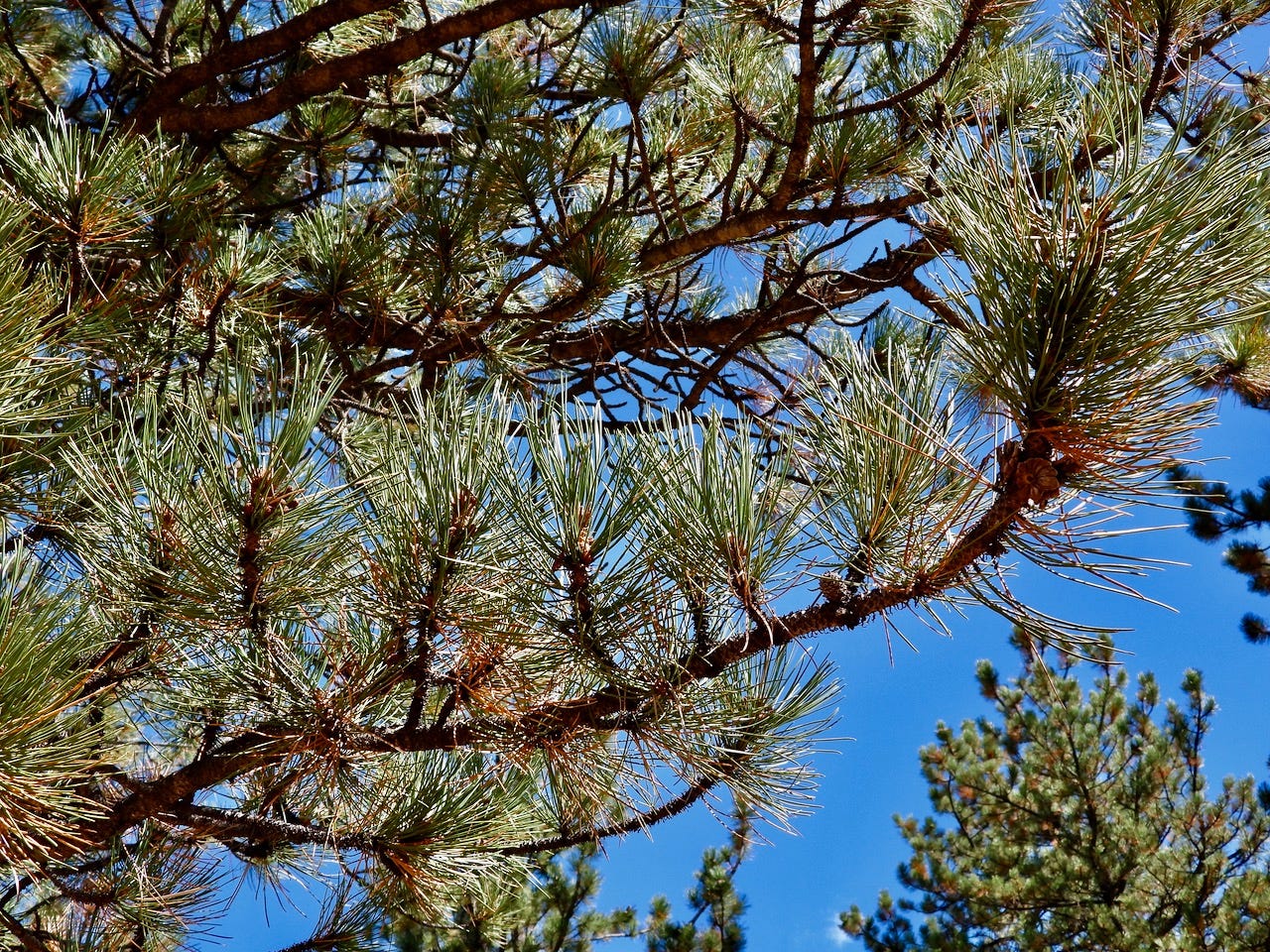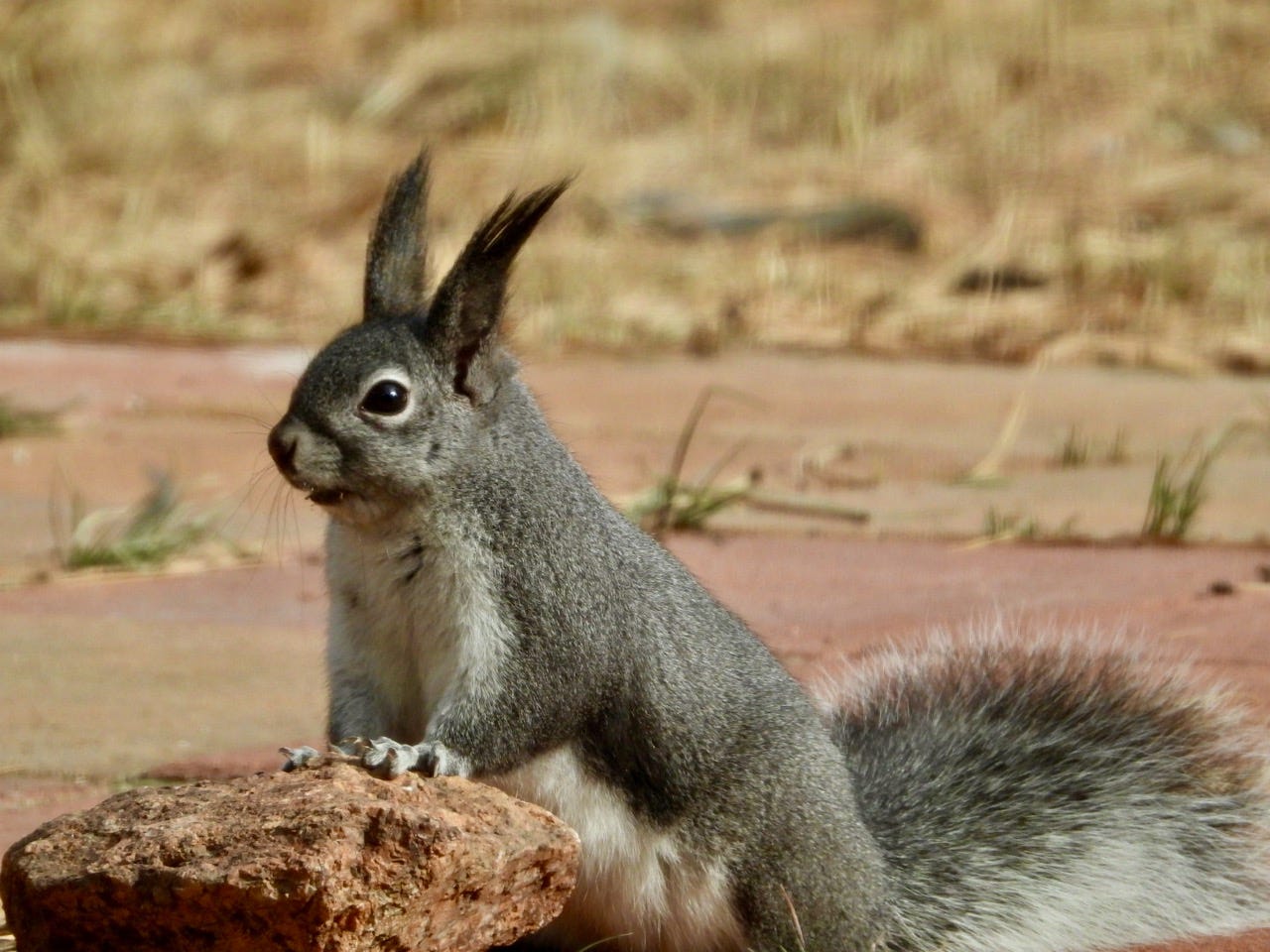The Autumn forest floor is a jumble of varied pine needles and cones, Aspen leaves, grasses, the remnants of the season’s various wildflowers and other foliage, mushrooms, small twigs to large branches, and, in patches, an increasing amount of the tips of the Ponderosa Pine branches known as ‘terminal buds’.


A few clippings of the terminal buds here and there are hardly noticeable, but then you might come upon quite a pile of dozens of clippings under particular trees. A sight that could be worrisome and certainly causes questions. Walking the dog out the end of our driveway recently, the growing pile of close to 100 terminal buds under one particular tree caught my attention and I knew the little culprit to blame.
I wrote about the connection between the Abert’s Squirrel, the Ponderosa Pine tree, and the false truffle fungi in my very first post on this blog over a year ago. Learning of the unique triangle of mutual benefit to each other has fed my ecological fascination of natural interdependencies, which led to that being an overarching theme of this blog. Seeing the pile of terminal buds has brought me happily back to the origins of this writing project.
So, you’ve likely guessed the culprit by now: our beloved Abert’s Squirrels. The Aberts are so bonded with this tree, the Ponderosa Pine, that they are rarely found outside of the Ponderosa ranges. The Abert squirrels feed on the Ponderosas seeds (in the cones), pollen cones, the inner bark phloem layer, and the False Truffle fungi that grow at the base of the tree. Food from the Ponderosa comprises nearly 100% of their diet. Snagging a few fallen seeds from under the bird feeder is merely a treat for them.
So, why the terminal bud cutting? The terminal, the end of the branch, and the bud, the place of new growth for the tree, have the most photosynthesis and glucose production happening in the phloem layer of the bark, and therefore, the most energy benefit for a little squirrel to access. The squirrel gnaws at the shoot just down from the end (terminal) needle cluster, opening a space to get at the bark layer. They cut the needle cluster that is in their way, letting fall to the ground, and get to the juicy phloem layer just under the bark. Eat it quickly before it dries out, get the liquid, the sugars, and nutrients. Drop the cut stem to the ground and move to the next. They can go through the terminal bud in just a few minutes, dozens in an hour if that is their main source of food, especially in deep winter when other sources are no longer available.



Does this hurt the tree?
• Even dozens of terminal buds cut on a tree with thousands of buds already is a very small percentage of the tree’s capacity to photosynthesize and keep creating its own food. In areas with large squirrel populations and few Pondos, it could overwhelm the trees, however, squirrel population numbers vary according to resources available and you simply won’t find a tree killed by squirrels alone. Additionally, you can observe on some of the cut branches that the cut has stimulated new tree growth in buds growing laterally out from the first snip location. New growth equals more photosynthesis and food for the tree.

• It isn’t ALL the trees. Once you notice terminal buds in an area, start looking under different trees. You’ll see that some are far more heavily trafficked than others, and some are not fed on at all. So, some trees are ‘Feed Trees’ and many others are not. How is this determined by the squirrel? That is a mystery that has occupied many studies in the last hundred or so years! The determiners seem to most likely be a few key things:
Chemistry - the tree can produce terpene chemicals (fascinating stuff!) into the phloem that will discourage the squirrel from feeding. The tree can raise or lower the levels of terpene chemicals according to its own needs. These levels can vary greatly from tree to tree of the same species. Some studies show the Feed Trees as having lower terpene levels.
Girth or age: it seems that a Pondo’s size of 5 inches to 2 feet in trunk diameter is the most tasty. Too small, generally young, and too large, generally older, do not tend to get attention.
Possibly a dwarf mistletoe infection (the subject of a future post) has weakened the tree, making the bark easier to peel.
OR a squirrel has made a choice to alternate which trees to feed on each year, leaving a tree alone for 2-3 years before feeding again.
Can this be a good thing in the long run? Absolutely. Greenery on the ground in the winter months will help to feed the Mule Deer, rabbits, and other wildlife when other resources are scarce. The terminal buds will also break down and return to the earth as all organic material does and will contribute to the nitrogen cycle, feeding the very tree it fell from. We found terminal buds that were evidently from last year in the process of breaking down. A feed tree last year, a rest year now?
Oh, and speaking of needles falling, you might have also noticed that nearly every Ponderosa Pine right now has its interior needles turning brown and flying off, along with the Aspen leaves, with every wind gust. This too is normal. These needles are 3-5 years old now and no longer strong photosynthesis producers. The tree sheds about one-third of its needles each Autumn. Akin to your dog shedding or the duck molt I wrote about previously, life is rolling in its seasonal patterns as it should.


So, if you see the terminal buds on the ground, rather than be alarmed, be curious. See how many there are, see if you can find a branch that had the bud chewed off, and look for the discarded stems that have been chewed. There’s more going on than our momentary attention can fathom unless we take some time to stop, look deeper, and watch the little goofball at work.
You can find The Abert Essays, along with my ‘Encounters’ posts, on my FaceBook, Instagram, and YouTube sites: https://linktr.ee/abertessays
Sources:
- Many thanks to Biologist Sylvester Allred, Northern Arizona University, a top expert on all things Ponderosa Pine and Tassel-eared squirrels, for his learned advice on this content.
- The Natural History of Tassel-Eared Squirrels, Sylvester Allred, University of New Mexico Press, 2010, pp 38-46, 130-134
- https://csfs.colostate.edu/2017/09/07/dying-off-color-pine-needles-normal-autumn/
- Ponderosa: Big Pine of the Southwest, Sylvester Allred, University of Arizona Press, 2015
- https://academic.oup.com/jmammal/article/92/5/1021/883784





